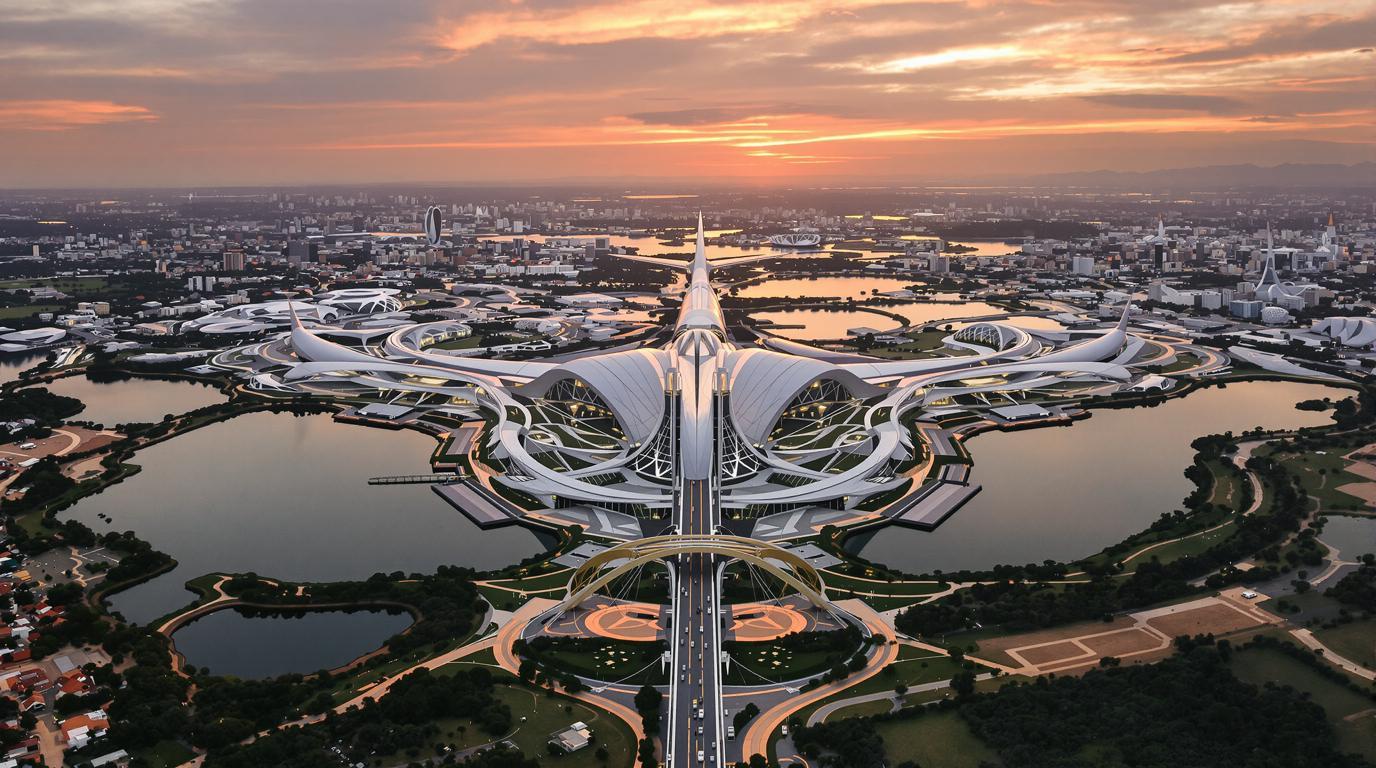Brasília isn’t just Brazil’s capital—it’s arguably the world’s boldest architectural experiment. When President Juscelino Kubitschek declared in 1956 that Brazil needed a modern capital, few imagined that within just 41 months, a futuristic metropolis would emerge from the central plateau’s empty savanna.
A modernist utopia designed in just 41 months
Oscar Niemeyer, Brazil’s visionary architect, transformed the Distrito Federal into a concrete canvas for his revolutionary designs. The city’s layout—shaped like an airplane when viewed from above—wasn’t accidental. Urban planner Lúcio Costa intended this “Plano Piloto” as a symbol of Brazil soaring into modernity.
“I wanted to create a city where the monumental and the functional could coexist—where beauty would be inseparable from its purpose,” Niemeyer once explained about his Brasília creations. The result earned UNESCO World Heritage status in 1987.
The cathedral that appears to defy gravity
The Metropolitan Cathedral ranks among Niemeyer’s most breathtaking achievements. Sixteen curved concrete columns rise toward the heavens, connected by stained glass panels that bathe visitors in kaleidoscopic light. Upon entering, many visitors experience what locals call “the Niemeyer effect”—that momentary gasp when encountering spatial design that seems to defy physical possibility.
Where the government buildings rival modern art museums
The National Congress building—with its twin towers flanked by two domes (one upturned, one inverted)—has become Brazil’s defining political symbol. The Senate and Chamber of Deputies occupy these remarkable structures, proving governance can occur within artistic masterpieces.
As Brazilian architectural historian Carlos Lemos notes, “In Brasília, Niemeyer challenged the notion that government buildings must be intimidating and austere. Instead, he made them playful and approachable—democracy expressed through curves.”
The hidden gem most tourists overlook
While most visitors flock to the Esplanade’s iconic structures, the Santuário São João Bosco chapel offers a more intimate modernist experience. Its twelve columns support walls of breathtaking blue stained glass in 12 different shades. When afternoon light filters through these panels, the interior transforms into an otherworldly blue sanctuary.
A man-made lake larger than Manhattan
Lake Paranoá, spanning 38 square kilometers, was created alongside the city as both climate regulator and recreational space. The Juscelino Kubitschek Bridge, designed by Alexandre Chan, gracefully arcs across the water with three asymmetric arches that seem to skip across the surface like stones.
Explore beyond the concrete masterpieces
For a break from modernist architecture, Parque da Cidade offers 420 hectares of green space—larger than New York’s Central Park. Here, locals picnic, jog, and play beneath the cerrado vegetation on weekends.
A city that transforms at golden hour
Brasília’s wide avenues and white structures take on a magical quality during sunset. The buildings’ clean lines create dramatic shadows, and Lake Paranoá reflects the golden light like a sacred mirror. For photographers, the Praça dos Três Poderes at this hour offers unmatched composition opportunities.
Where to stay in the modernist capital
The Royal Tulip Brasília Alvorada, designed by Ruy Ohtake, continues the architectural tradition with its curved façade and lakeside location. For more traditional accommodations, the Melia Brasil 21 places you centrally with easy access to the city’s monuments.
When to visit: dry season reveals architectural details
May through September offers clear skies and lower humidity, ideal for architectural appreciation. During this period, the absence of rain reveals Niemeyer’s structures in their full glory without the haze that often confuses visual perspectives in the rainy season.
The culinary scene beyond government lunch breaks
Once criticized for lacking authentic Brazilian flavors, Brasília now boasts impressive restaurants like Antiquarius for traditional Portuguese-Brazilian cuisine and Feitiço Mineiro for hearty dishes from Minas Gerais state. The local culture preserves culinary traditions from across Brazil.
Brasília represents something rare in our world—a complete city conceived as a single artistic vision. While it may lack the organic chaos of Rio or São Paulo, it offers instead a testament to human imagination and the belief that we can design better ways to live. In Niemeyer’s concrete curves and Costa’s sweeping boulevards, visitors find not just buildings but a manifesto written in three dimensions.
